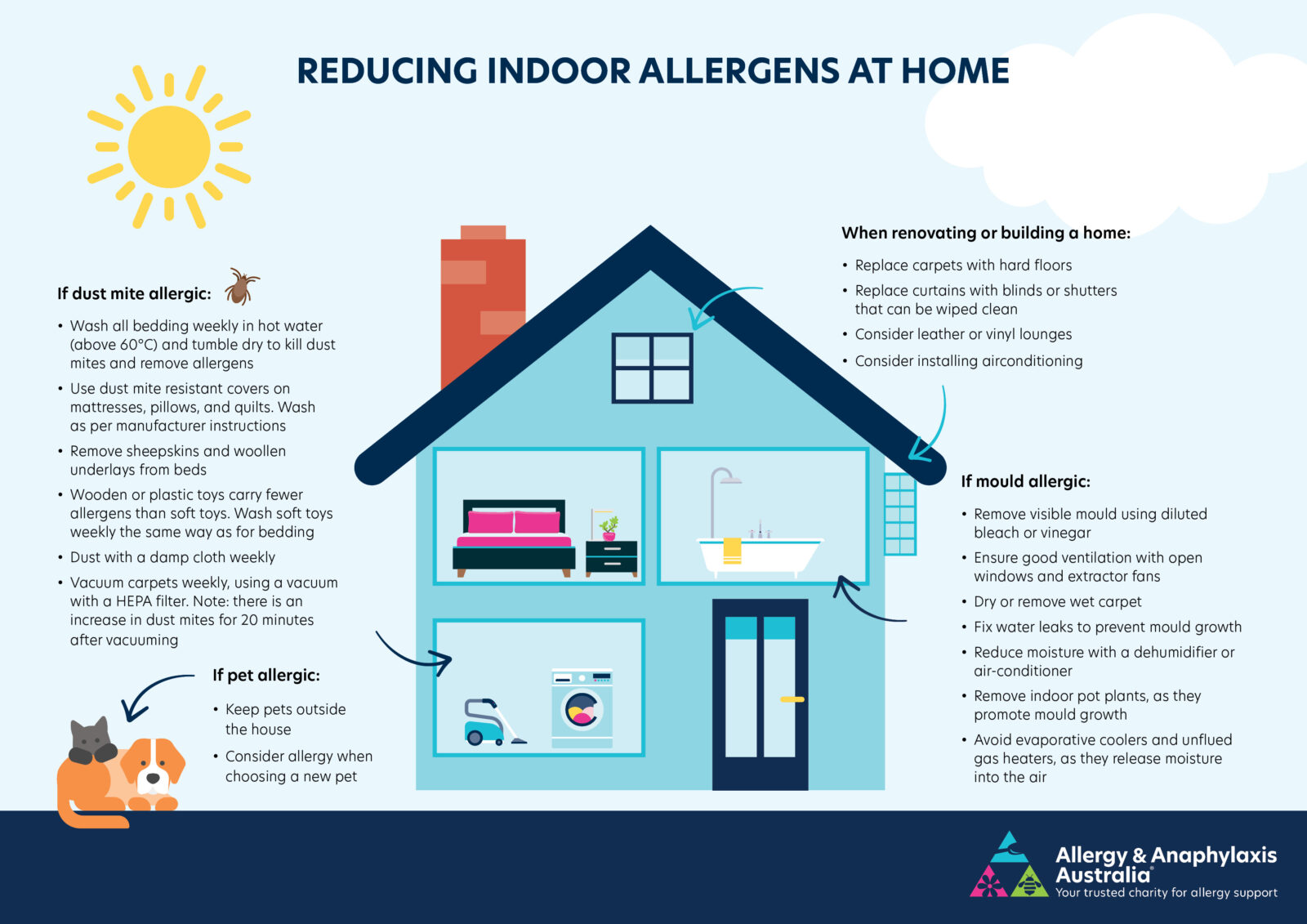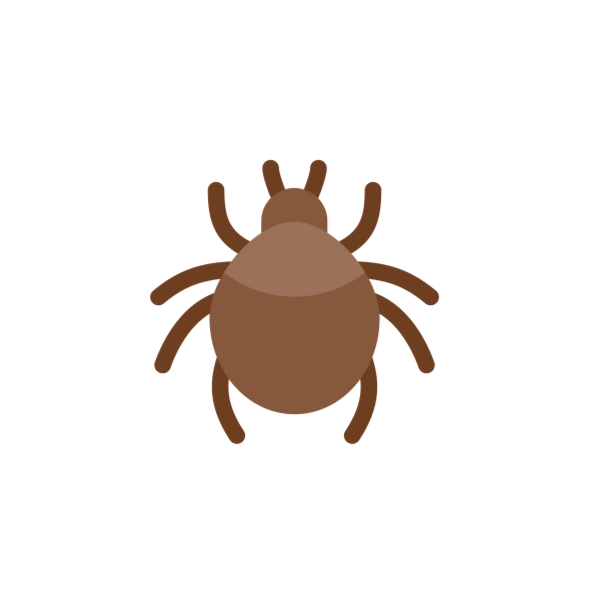It’s important to try reducing exposure to anything that triggers your allergic rhinitis (hay fever) or asthma, and you should take medication as recommended by your doctor or pharmacist.
How to Reduce Indoor & Outdoor Allergens



Reducing pollen exposure
- Stay indoors whenever possible, particularly in the pollen season and on windy days
- Avoid going out just before, during or just after a thunderstorm, particularly in spring and summer
- When outside, wear sunglasses
- Shower (including washing hair) when you arrive home after being exposed to high pollen outside
- Rinse your eyes with water when needed
- Do not mow grass and stay inside when it is being mown. If mowing is unavoidable, wear a mask and consider taking a non-drowsy antihistamine
- Keep windows closed at home and in the car. Use recirculating air conditioning in the car
- Do not picnic during the pollen season
- Try to plan holidays out of the pollen season, or holiday at the seaside
- If landscaping at home, research which plants are less likely to trigger allergic rhinitis. If you are sensitive to plants in your garden, consider replacing them with others that don’t trigger allergic symptoms
- Dry bedding and clothing indoors, or in a tumble dryer
Check the pollen count each day at the AusPollen website or download their app.

Reducing pet dander exposure
- If pet dander is causing only mild symptoms, consider keeping the pet outside
- For severe symptoms not controlled by treatment, consider removing the pet from the home. It may take around 20 weeks for allergen levels to decrease after removal
- Cats and dogs are a common source of allergen in the home. The allergens come from the sweat glands in all cats and salivary glands in all dogs. Although the amount of allergen released can vary between breeds, there are no hypoallergenic animals or breeds
- As allergens are stuck to the hair and skin of pets, the allergens become airborne when the pet sheds their hair

Reducing dust mite exposure
- Both dust mites themselves, as well as their droppings, can cause allergic reactions. You must reduce the number of dust mites in your home, and also remove the allergen they produce
- Wash sheets, pillowcases and other bedding weekly in hot water (more than 60ºC). This will kill dust mites and wash away the allergen they produce. If you cannot wash in hot water, use a commercial product containing tea tree or eucalyptus oils, which kills dust mites in cold water
- If washing normally, hot tumble drying items for ten minutes after they are dry will kill dust mites. Dry cleaning is not as effective – it will kill dust mites but won’t remove the droppings they produce
- Use dust mite resistant covers on mattresses, pillows and quilts. Wash these in hot water as recommended by the manufacturer
- Remove sheepskins and woollen underlays from the bedroom
- Remove soft toys from the bedroom if possible. Any soft toys that remain should be washed weekly using the same method used for sheets. (Freezing soft toys overnight kills dust mites, but it doesn’t remove their droppings)
- Dust weekly with a damp cloth
- Vacuum carpets weekly. Note that vacuuming increases the amount of dust mite allergen in the air for up to 20 minutes. Where possible, ask someone without allergic rhinitis to do the vacuuming and wait 20 minutes before re-entering the room. High efficiency particulate air (HEPA) filter vacuum cleaners may remove more allergen than other vacuum cleaners, however, they still temporarily increase the amount of dust mite allergen in the air
- Remove curtains from windows and replace with blinds or shutters that can be wiped clean
- Consider replacing carpets with hard floors such as floorboards or tiles
- Consider leather or vinyl lounges instead of cloth

Reducing mould exposure
- Remove visible mould (with diluted bleach or diluted vinegar)
- Ensure adequate ventilation (open windows to allow air flow)
- Dry or remove wet carpet
- Fix any water leaks
- Consider using a dehumidifier to reduce moisture in the air
- Remove indoor pot plants as they can increase mould growth
- If you are allergic to mould, do not mow lawns or work with garden compost or mulch
Mould prevention and removal
People with mould allergies need to be aware of this and take action to remove the mould as soon as it appears and try to prevent it growing back.
These fact sheets below give good advice about mould prevention and removal.
Understanding allergy care
Learn about allergy care, seeing an allergy specialist, the Australian health system, treatment options and more.
Developed as part of the Shared Care for Allergy Project, in collaboration with the National Allergy Council through funding from the Australian Government, Department of Health, Disability and Ageing.

Read about allergic rhinitis (hay fever)
Find out about allergic rhinitis, symptoms, treatment and more.
